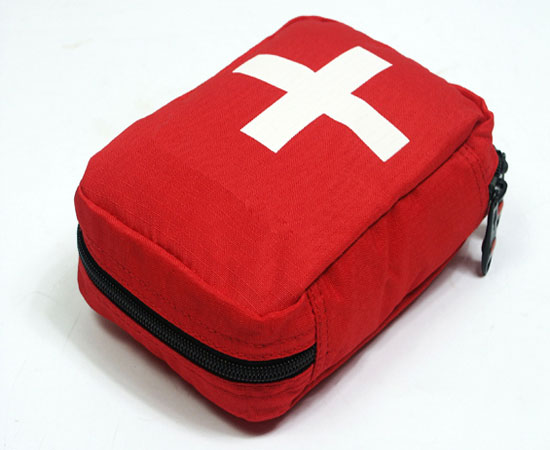
Keeping a first aid kit handy at all time is very important. You never know when you might need it, but more importantly, you need to ensure that you stock it well with the right tools. Many people are not well aware as to what exactly should be included in a first aid kit. Here is a list of the 10 must haves in your kit for any emergency:
1. Tweezers
A very important part of any type of first aid kit, is a pair of tweezers. If you are someone who loves hiking or indulging in any sort of outdoor activity, then you must make sure that you have a pair of these in your kit. If you want to get rid of a tick or even a splinter, tweezers come in handy are safe. Do keep in mind that they need to be disinfected every time you use it.
2. Anaesthetic Spray or Lotion
Bites or stings of certain bugs like ants and mites sometimes hurt a lot. Here, the aesthetic spray or lotion helps you relieve the pain. Although this may not completely rid you of the itch or pain, it will at least provide you some comfort and sometimes even quick relief.
3. Hand sanitizer and gloves
This is a very essential inclusion in your first aid kit and also in your everyday life. Sanitizers help you take care of the dirty hands. So you require it when you need to wash your hands but have no water and also at times when you need to tend to wounds and your hands need to be clean. For treating any sort of wound, you need to first sanitize your hand, then use the gloves, take care of the wound and then sanitize again after finishing the job.
4. Pain relievers
Another must have in your first aid kit, is a pain reliever and medication which brings down fever as well. This may include various over-the-counter medicines like acetaminophen, aspirin and even ibuprofen. But caution is required while administering the same as people below the age of 18 should not consume aspirin, for its after effect in Reye’s syndrome, which is quite dangerous.
5. Gauze and tapes
These are very helpful in case you get cuts or even scrapes. When the wounds are small, you will have to use the gauze pad to put pressure on it so that the bleeding stops. Sometimes if you want a bandage in order to cover up the wounds then you can use the gauze with the tape. You could also keep little band aids in your first aid box for minor cuts.
6. Wipes or solution for cleaning a wound
Any open wound or cut requires to be cleaned before actually bandaging it. For this purpose, wipes and solutions are a help. These should be used only if you find that no clean water is available. If you have injuries of eyes or wounds at sensitive parts, then you should use lens solution or saline water. If you thought they would take up a large space in your first aid kit, then you are mistaken, as you get them in mini packs as well.
7. Antibiotic cream
One of the most versatile cream or ointment is the antibiotic cream. It helps in a number of ways like preventing infections in tiny wounds, keeping the wounded area moist which will help in the healing process and also preventing the bandage from sticking to the wounds. So make sure that you have this in your first aid kit.
8. Oral antihistamines
One of the most common issues is allergies. People can be allergic to anything, starting from bugs to pollen. Hence you need to make sure that you have oral antihistamines in your first aid kit, you never know when your allergies may crop up. Sometimes people end up having severe cases of allergies; in that case you need to keep the injectables which include epinephrine.
9. Creating the kit
Once you have all the essential things for your first aid kit, you will have to create it. Keep in mind; you might need it in all conditions, i.e. even on one of those rainy days. Hence, spending a lot of money on getting fancy bags is a waste. Any sort of waterproof bag is going to work. You can simply use any sort of makeup bag or a tool kit or even a fanny pack.




